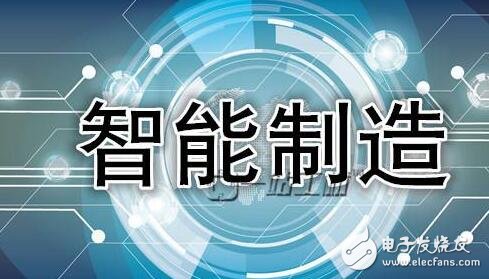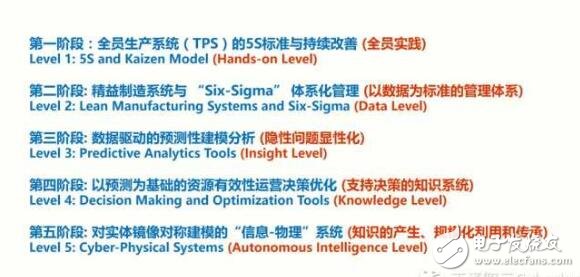“Smart Manufacturing†can be interpreted in both manufacturing and intelligence. First, manufacturing refers to the process of processing or reprocessing raw materials and assembling components. Generally, manufacturing is divided into process manufacturing and discrete manufacturing (also in the form of discrete and process mixing) depending on the continuity of the production method. According to China's current standard GB/T4754-2002, China's manufacturing industry includes 31 industries, and further divided into about 175 medium-sized and 530 sub-categories, involving all aspects of the national economy. Intelligence is made up of the words "wisdom" and "ability". From the process of feeling to memory to thinking, it is called “wisdomâ€. The result of wisdom produces behavior and language, and the process of expression of behavior and language is called “abilityâ€. The two are collectively called “intelligenceâ€. Therefore, the whole process of feeling, memory, memory, thinking, language, and behavior is called intelligent process, which is the expression of wisdom and ability. However, due to the unbalanced development of China's technology base, enterprises often do not know where to start in the process of intelligent manufacturing implementation and upgrading. Therefore, based on the descriptive definition of intelligent manufacturing, the following will provide a preliminary understanding of the smart factory, manufacturing links and equipment intelligence, network interconnection, end-to-end data flow and other four aspects, in order to explain the main content of intelligent manufacturing. In the first three industrial revolutions, the traditional manufacturing system mainly upgraded its five core elements. It includes: 1, Material - materials, including features and functions, etc. 2, Machine - machine, including accuracy, automation, and production capacity, etc. 3. Methods - methods, including process, efficiency, and capacity 4, Measurement - measurement, including Six Sigma, sensor monitoring, etc. 5, Maintenance - maintenance, including usage rate, failure rate, and operation and maintenance costs, etc. These improvement activities are all carried out around human experience, and people are at the heart of these five elements. Regardless of how the production system advances in technology, the logic of operation is always: problems occur - "people analyze problems based on experience -" people adjust five elements based on experience - "solving problems -" people accumulate experience. The most important factor distinguishing intelligent manufacturing systems from traditional manufacturing systems is the sixth M, which is modeling (Modeling - data and knowledge modeling, including monitoring, forecasting, optimization and prevention, etc.), and through this sixth M drives the other five M elements to solve and avoid problems with the manufacturing system. Therefore, the logic of intelligent manufacturing operation is: problem occurs - "model (or with the help of people) to analyze the problem - "model adjustment 5 elements -" solve the problem - "model accumulation experience, and analyze the root of the problem -" model adjustment 5 elements - "avoid problems. The core problem to be solved by intelligent manufacturing is the process of knowledge generation and inheritance. 1, identification technology The identification function is a key part of the intelligent manufacturing service. The identification technology required mainly includes radio frequency identification technology. Based on the depth 3D image recognition technology and the automatic recognition technology of object defects, the task based on 3D image object recognition is to identify what type of image is in the image. The object, and giving the position and direction of the object reflected in the image, is a perceptual understanding of the three-dimensional world. After combining artificial intelligence science, computer science, and information science, 3D object recognition is a key technology for identifying object geometry in intelligent manufacturing service systems. 2, real-time positioning system The real-time positioning system can track and manage assets such as materials, parts, tools, equipment, etc. in real time. During the production process, it is necessary to monitor the location of the products, as well as the storage locations of materials, parts and tools. In this way, a real-time location network system needs to be established in the intelligent manufacturing service system to complete the real-time location tracking of the roles in the whole production process. 3. Information Physics Fusion System The Information Physical Convergence System, also known as the "Virtual Network - Physical Physics" production system, will revolutionize traditional manufacturing logic. In such a system, an artifact can figure out which services it needs. The existing production facilities are gradually upgraded by digitization so that the production system can achieve a completely new architecture. 4, network security technology Digitalization has driven the development of the manufacturing industry, benefiting a lot from the development of computer network technology, and at the same time posing a threat to the network security of the factory. Skilled workers who used to be accustomed to paper now rely more and more on computer networks, automated machines, and ubiquitous sensors, and the job of technicians is to convert digital data into physical components and components. The digital technical data of the manufacturing process supports the entire process of product design, manufacturing and service and must be protected. 5, system collaboration technology This requires the large-scale manufacturing engineering project complex automation system overall design technology, installation and debugging technology, unified operation interface and engineering tool design technology, unified event sequence and alarm processing technology, integrated asset management technology and so on. In the 21st century, with the development of technology, intelligent manufacturing services are constantly innovating and evolving. Many technologies need to be used and solved in the future, but it is certain that the development direction of intelligent manufacturing services is real-time, reliable, efficient and low. Cost-based, and these factors will help China's manufacturing industry usher in a new era. To achieve intelligent manufacturing, we must first solve the big problem of intelligent maintenance, and then do intelligent prediction, and finally achieve a worry-free system and great value. Specifically, it is divided into the following stages: The first phase, the full production system. This is proposed by Japan. It should be the core standard in the entire manufacturing system in the 1970s and 1980s. This curing is in the organization and training of people. The second stage, lean manufacturing and 6-Sigma. Its core value is how to establish a management system based on data as a standard. Under this foundation, it includes quality management system, product life cycle management system and so on. At this time, the data really plays a role in the manufacturing process. The third phase, data-driven predictive modeling analysis. Currently in the most important period of transformation, we have not fully reached the third stage. Data-driven predictive modeling analysis refers to how to make implicit problems explicit, and then to solve hidden problems after explicit, to avoid the occurrence of explicit problems. The fourth phase is based on forecasting optimization of resource effectiveness operational decisions. After the correlations generated in the past can be modeled, how to perform real-time dynamic optimization according to changes in system production, environment, and personnel. The fifth stage, the "information-physics" system. We believe that it is based on a very accurate modeling of the environment and activity objectives of all the equipment itself. At this time we generate knowledge application and inheritance problems. Usb Cables,Usb Wires,Usb Wire,Micro Usb Cable UCOAX , https://www.jsucoax.com


What is smart manufacturing?